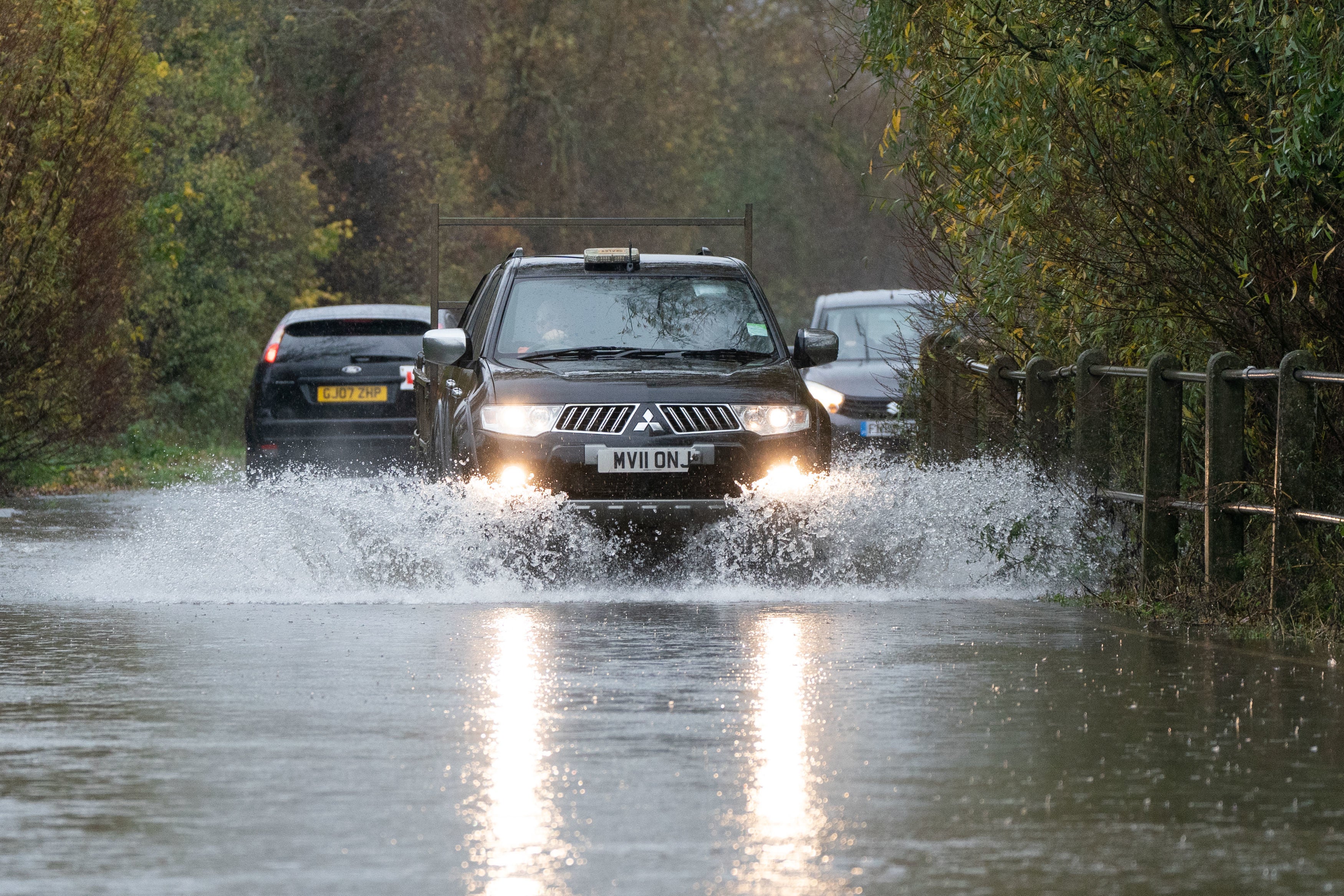Drivers face £1,000 fine for driving in bad weather
Failure to observe rule could land motorists with 12-month ban, says legal expert

Your support helps us to tell the story
This election is still a dead heat, according to most polls. In a fight with such wafer-thin margins, we need reporters on the ground talking to the people Trump and Harris are courting. Your support allows us to keep sending journalists to the story.
The Independent is trusted by 27 million Americans from across the entire political spectrum every month. Unlike many other quality news outlets, we choose not to lock you out of our reporting and analysis with paywalls. But quality journalism must still be paid for.
Help us keep bring these critical stories to light. Your support makes all the difference.
As winter draws in and the hours of daylight grow shorter, drivers are being warned to heed rules on driving in poor conditions which can carry a fine of up to £1,000.
For more than a decade, new cars have been legally required to be fitted with daytime running lights (DRLs), which switch on automatically when the vehicle starts.
However, these are not bright enough to illuminate the road, and are often only fitted at the front of the car – meaning they are no help for drivers spotting vehicles ahead of them in poor conditions.
As a result, Rule 226 of the Highway Code states that motorists “must use headlights when visibility is seriously reduced, generally when you cannot see for more than 100 metres”.
Failure to do so in bad weather and outwith the hours of daylight can carry a fine of £1,000 and could even result in a 12-month ban in severe circumstances, according to the director of Patterson Law, the UK’s largest legal firm specialising in road traffic offences.
“The requirement in law is for every vehicle to have working headlamps, rear lamps, registration plates lamps and side marker lamps,” Dominic Smith told Somerset Live. “All such lamps must be unobscured and lit during the hours of darkness and during seriously reduced visibility.
“Hours of darkness are defined as between sunset and sunrise. ‘Seriously reduced visibility’ is not defined, but would be a question of fact. Examples could include fog, snow, heavy rain or spray conditions and badly overcast weather, just to name a few.
“Failure to have working lamps or failure to illuminate lamps during such conditions would be an offence which would carry a fine of up to £1000. This would include cases where front lamps are illuminated but the rear ones are not.
“If no lamps are showing and the conditions are serious enough that a police officer could deem that the driver is causing serious danger to other road users, this may even fall under the offence of dangerous driving, which carries a minimum 12-month disqualification.”
Graham Conway, of Select Car Leasing, also warned that driving without headlights and taillights illuminated during bad weather could be “extremely dangerous”.
“DRLs have been helping to improve road safety for more than a decade now,” Mr Conway told the news site. “But I’d urge motorists to understand precisely how they work and what job they’re supposed to do.
“We’ve heard countless reports of people failing to illuminate their headlights and taillights while driving in poor visibility in recent weeks, and there’s a fear motorists might mistakenly believe that their DRLs are sufficient in those sorts of conditions. They’re not.
“We had a rash of reports during last week’s rain storms, with drivers taking to spray-engulfed motorways with just their DRLs lit – which is obviously incredibly dangerous. And it would clearly be extremely foolish to rely on DRLs when the sun goes down, too.
“The most important thing to remember is that many DRL systems don’t automatically light the rear lights. If you want to be seen by the cars who are following you, be sure to click your headlights on.”
According to the Highway Code, motorists can also use front or rear fog lights during bad weather, but “must switch them off when visibility improves”.
Subscribe to Independent Premium to bookmark this article
Want to bookmark your favourite articles and stories to read or reference later? Start your Independent Premium subscription today.


Join our commenting forum
Join thought-provoking conversations, follow other Independent readers and see their replies
Comments